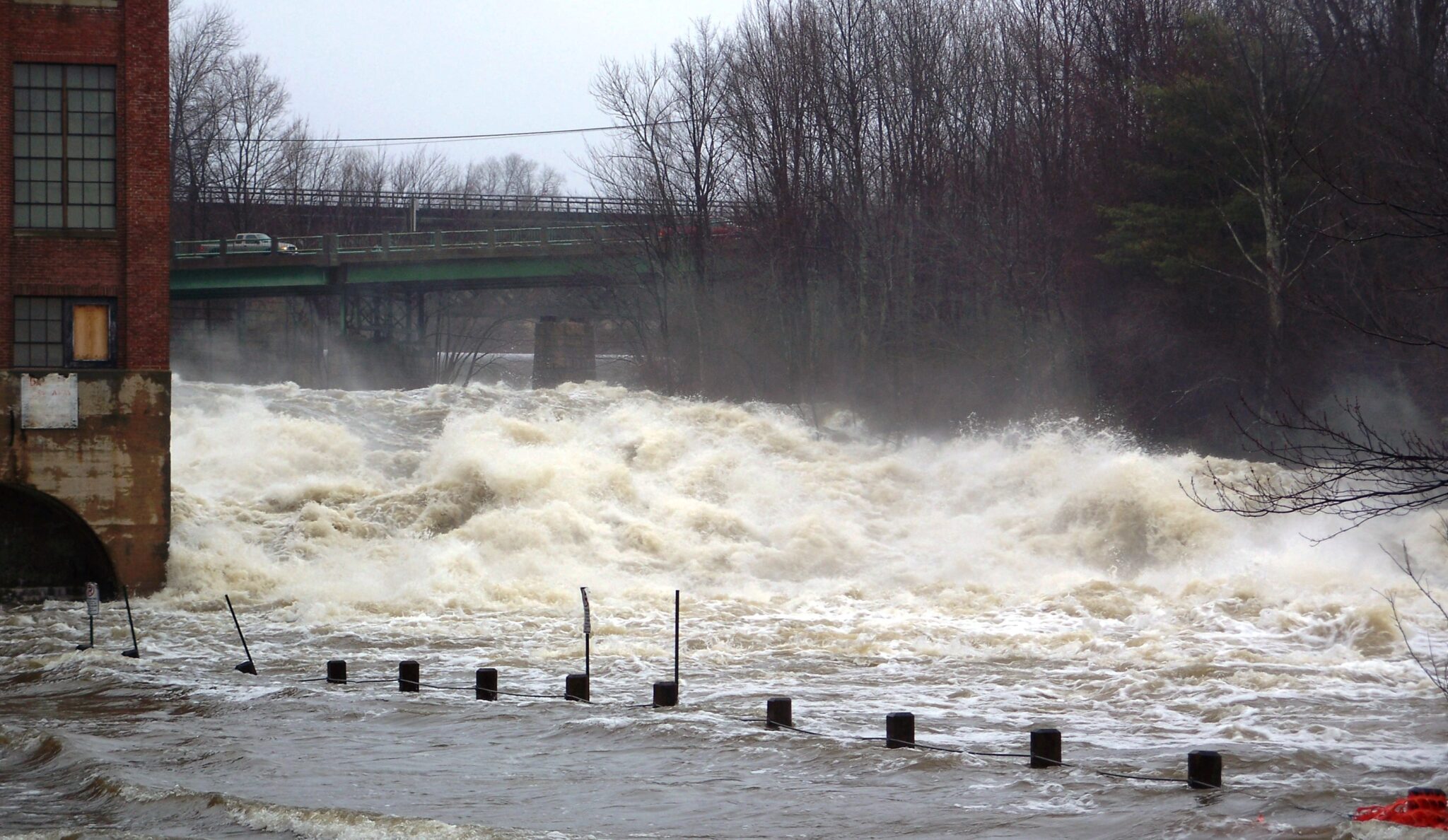
April 18, 2024
By Kyle Pimental, Assistant Director, Strafford Regional Planning Commission
ROLLINSFORD – A nearly three-year planning effort between the Town of Rollinsford and the Strafford Regional Planning Commission (SRPC) has come to an end, resulting in the adoption of improved flood hazard and aquifer protection regulations.
Funded through two separate grants from the NH Department of Environmental Services (DES), including a Project of Special Merit award and a Local Source Water Protection Grant, SRPC worked closely with Town staff, the Planning Board, and project partners to develop proposed amendments to Rollinsford’s Flood Hazard and Aquifer Conservation Overlay Districts. While distinct from each other, both efforts were happening simultaneously, which created unique opportunities for education and outreach synergies between the two updates – a key component to the success of the project that was assisted by staff from UNH Extension/NH Sea Grant.
Early on, the project team set a series of goals to help guide the update process and to provide measurements of success. Goals included incorporating the best available coastal flood risk science in decision-making through the adoption of higher floodplain management standards, as well as ensuring adequate protection of drinking water resources against land uses that may pose a risk of groundwater contamination.
SRPC was tasked with conducting a comprehensive regulatory audit, planning several outreach events, and developing proposed zoning amendments based on the most relevant available guidance.
The flood hazard update included a review of the NH Coastal Flood Risk Summary, the NH Model Floodplain Ordinance, and updates to flood resistant design and construction standards referenced in the state building code and residential code. As a result of this review, SRPC proposed a series of amendments. Those amendments included updates that more clearly identify administrative provisions, the permitting process, and responsibilities of the floodplain administrator; provide flexibility for detached accessory structures; improve consistency with best practices for floodplain management; and clarify the process for an applicant to appeal an administrative decision. One of the most substantial revisions was to the structure requirements section, which now requires that new construction located in the special flood hazard area have the lowest floor elevated at least two feet above the base flood elevation.
“As you know, proposed floodplain amendments to the Zoning Ordinance for Rollinsford were recently approved by the voters at the Town meeting. Since then, I have heard several positive comments about them from the residents. We are aware of the importance of having strong floodplain regulations to reduce future risks to property owners. In addition, as the floodplain administrator, I appreciate the improved guidance which will assist me to ensure the regulations are being applied correctly. Please know I appreciate all the time & energy you put into this process; we couldn’t have done it without your advice & support.”
-Tom Clark, Rollinsford Code Enforcement Officer
The aquifer conservation update included a review of NHDES-approved wellhead protection areas and the NHDES Groundwater Protection Model Ordinance. Proposed amendments included revisions that more clearly outline authority, purpose, and district boundaries; establish performance criteria for development within the overlay; simplify permitted land uses; strengthen the list of prohibited uses; define a process for those uses allowed by conditional use permit; maintain existing non-conforming uses; identify a list of exemptions; require maintenance and inspections; and determine enforcement procedures and penalties for non-compliance.
After an outreach campaign, which included several widely publicized public hearings with the Planning Board, a virtual workshop with municipal staff and board members, the development of informational flyers, and various social media postings, Rollinsford residents overwhelmingly voted to approve the proposed amendments for both overlay districts during this year’s election day in March. These amendments showcase another example of a coastal community taking appropriate steps to reduce risk and potential damage from future flooding and protect long-term drinking water sources.
In addition to Town staff and the Planning Board, our project partners, which included the NHDES Coastal Program and UNH Extension/NH Sea Grant, provided technical assistance, expertise, and engagement capacity throughout the process and were instrumental in the project’s overall success.
Questions about this project? Contact kpimental@strafford.org
